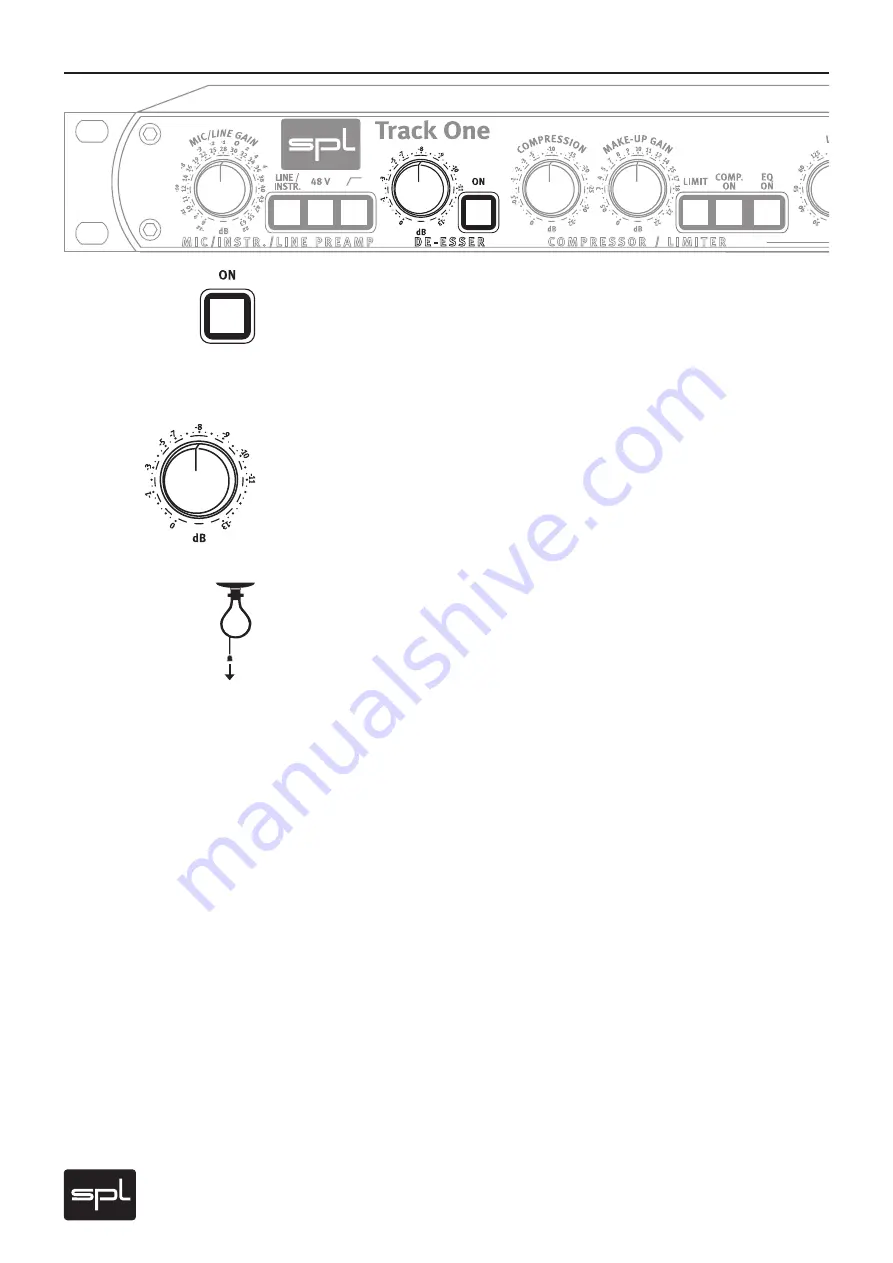
12
Track One
ON
The first processing module is the de-esser, which removes disturbing sibilants when
required. The de-esser module is activated with the ON button. The S-DET. LED in the display
area shows that S-sounds are being detected. It is independent from the De-Esser control
and always informs about detected sibilants – attracting your attention to a possible need for
regulation (also see „S-DET.“ on page 17).
De-Esser control
This control serves to determine the intensity of S-sound reduction. Because processing
is undertaken from comparison with the level of the entire frequency spectrum (see next
section) the processing is more intensive with extreme S-sound levels than with those of
lower levels. This processing method achieves a consistent level of the remaining sibilants in
the output signal.
SPL De-Esser technology
In contrast to common de-essers based upon compressor techniques the SPL De-Esser makes
use of the phase cancellation principle. It employs filters that process only the reducible
“S-frequencies” but do not interfere with the remainder of the spectrum. The S-frequencies
are detected automatically, the phase is inverted and mixed with the original signal. This
method of operation has distinct advantages because it is unobtrusive and helps retain the
original tonal quality. Compressor-typical side effects such as lisping or nasal tones do not
occur. Finally its operation is as simple as pulling on the hand brake.
The reduction is accomplished by comparing the average level with the individual S-sounds:
the de-esser functions only when the S-noise level exceeds the average level of the entire
frequency spectrum. This means for example that original S-sounds with a certain S-portion
are not processed whereas those that are too loud, or do not effectively contribute to the
sound, are reduced – but the character of the voice remains unchanged.
A further specialty is the integrated Auto Threshold function which makes processing indepen-
dent of the input level. Even when the speaker or singer does not maintain a constant distance
to the microphone, processing is retained at the pre-set de-essing value. Conventional
systems are dependent on the input level and work more intensively as the distance to the
microphone is reduced. As a result, the SPL De-Esser does not need to be monitored and
re-adjusted permanently to keep processing constant – and it can always be applied before
the compressor, as changing its position would not be an advantage. That is why an accordant
switching function is not necessary.
Control Elements
De-Esser








































